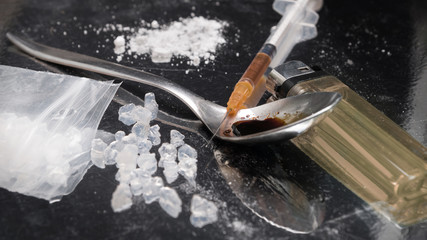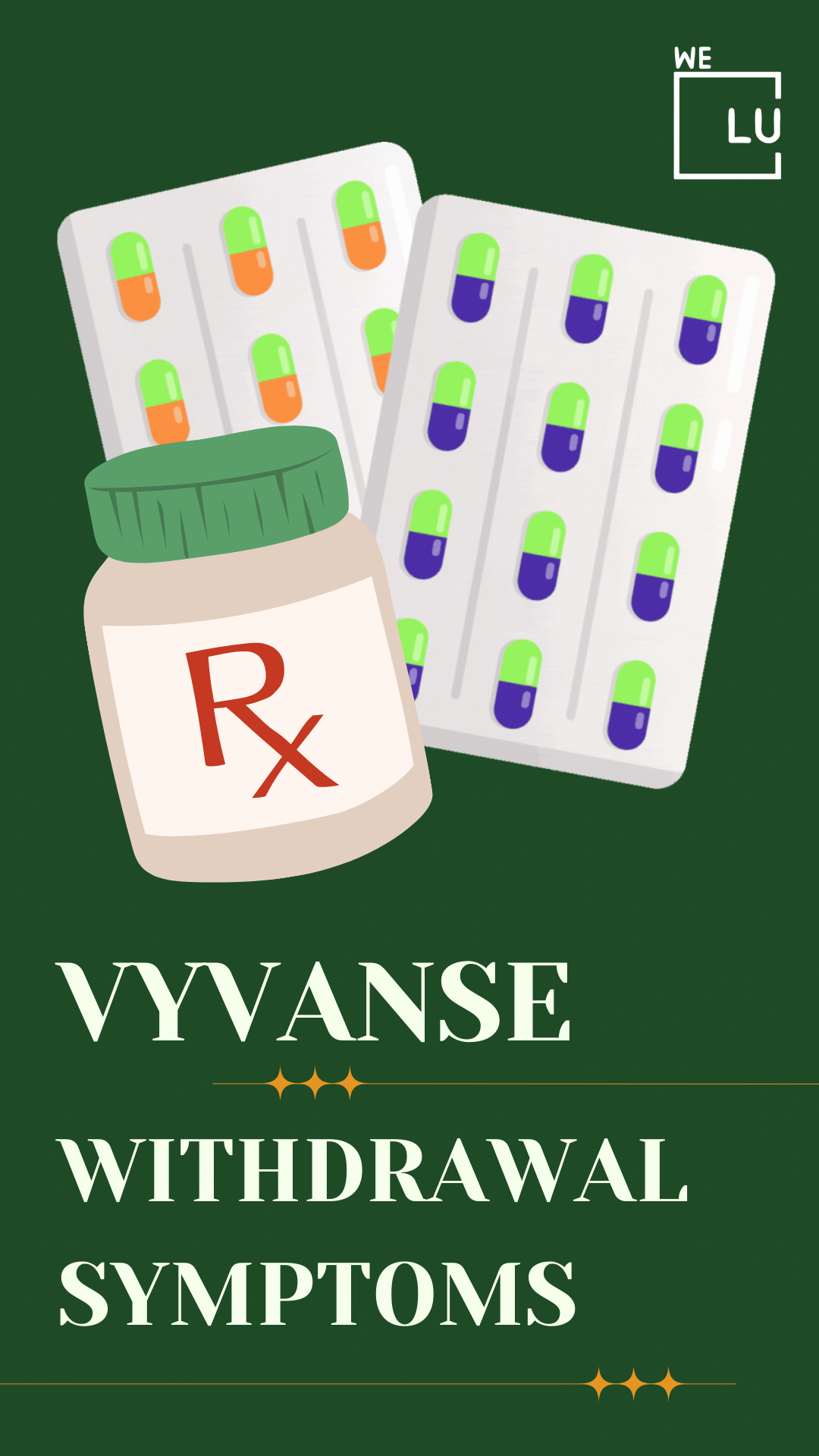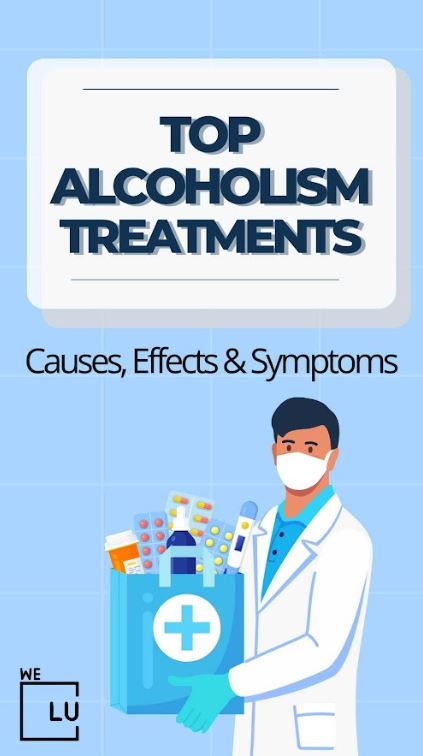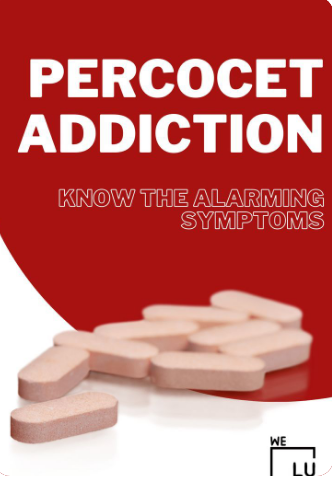What are the Risks and Side Effects of Injecting Meth?
Injecting meth involves using a needle and syringe to inject a liquid solution of methamphetamine directly into a vein, muscle, or under the skin. The liquid solution is usually made by dissolving methamphetamine powder in water or another liquid.
When a person injects meth, the drug enters the bloodstream quickly and produces an intense and immediate high, also known as a “rush.” This high can last for several hours, but the effects of meth typically wear off within a few hours, leading to a “crash” or a feeling of exhaustion and depression.
Can you inject meth? Injecting meth is a highly dangerous method of using the drug and can lead to a range of negative health effects, including infections, abscesses, collapsed veins, and an increased risk of overdose. It’s essential to seek help from a healthcare professional if you or someone you know is struggling with meth addiction.
Dangers of Injecting Meth
Injecting methamphetamine is a highly dangerous and risky method of using the drug, and it can have a range of negative side effects and health consequences. Some of the risks and side effects of injecting meth include:
- Increased risk of overdose. Injecting meth can lead to a higher risk of overdose, as the drug enters the bloodstream quickly and produces an intense and immediate high.
- Collapsed veins. Injecting meth can damage and collapse veins, leading to infections, abscesses, and other health problems.
- Increased risk of infections. Injecting meth can also increase the risk of infections, as the use of shared needles and other injection equipment can transmit diseases such as HIV and hepatitis.
- Damage to the heart and other organs. Long-term use of meth can lead to damage to the heart, liver, and other organs, which can lead to a range of health problems, including heart attack and stroke.
- Psychiatric and mental health problems. Meth use can also lead to a range of psychiatric and mental health problems, including paranoia, anxiety, and depression.
- Dental problems. Meth use can lead to dental problems such as tooth decay and gum disease, which are commonly referred to as “meth mouth.”
- Addiction. Injecting meth can lead to a higher risk of addiction and dependence, as the intense rush and euphoria associated with injecting meth can create a strong psychological and physical dependence on the drug.
It’s important to seek help from a healthcare professional if you or someone you know is struggling with meth addiction or experiencing any of the above side effects or health problems. Treatment options are available and can help individuals recover from meth addiction and achieve a healthier and more fulfilling life.
Smoking vs Injecting Meth
Smoking and injecting meth are both highly dangerous methods of using the drug, and they can have similar negative health consequences. However, there are some differences between injecting and smoking meth, including:
- Speed of onset. Injecting meth produces an immediate and intense high, while smoking meth produces a high that comes on more gradually and may be less intense.
- Duration of effects. Injecting meth produces a high that lasts for several hours, while smoking meth produces a high that may last for a shorter period of time.
- Health risks. Both injecting and smoking meth can lead to a range of negative health effects, including heart and lung problems, infections, and addiction. However, injecting meth can lead to additional risks such as collapsed veins and a higher risk of overdose.
- Addiction potential. Both injecting and smoking meth can lead to addiction, but injecting meth may lead to a more rapid development of dependence and addiction due to the intense rush and euphoria associated with injecting.

Skip To:
Learn More:
Get Help. Get Better. Get Your Life Back.
Searching for Accredited Drug & Alcohol Rehab Centers Near You? Or Mental Health Support?
Even if you have failed previously, relapsed, or are in a difficult crisis, we stand ready to support you. Our trusted behavioral health specialists will not give up on you. Call us when you feel ready or want someone to speak to about therapy alternatives to change your life. Even if we cannot assist you, we will lead you wherever you can get support. There is no obligation. Call our hotline today.
FREE Addiction Hotline – Call 24/7Meth Abuse Statistics
Methamphetamine is a highly addictive drug that can lead to serious physical and mental health problems, as well as significant social and economic consequences. According to the National Survey on Drug Use and Health (NSDUH), in 2020, approximately 1.5 million people aged 12 or older reported using methamphetamine in the past year.
2.6 million
Among people aged 12 or older in 2020, 0.9% (or about 2.6 million people) reported using methamphetamine in the past 12 months.
Source: 2020 National Survey on Drug Use and Health
1.5 million
Among people aged 12 or older in 2020, an estimated 0.6% (or about 1.5 million people) had a methamphetamine use disorder in the past 12 months.
Source: 2020 National Survey on Drug Use and Health
23,837
In 2020, approximately 23,837 people died from an overdose involving psychostimulants with abuse potential other than cocaine (primarily methamphetamine).
Source: CDC
Meth Drug Facts
What is methamphetamine?
Methamphetamine (meth) is a stimulant. The FDA-approved brand-name medication is Desoxyn.
What is its origin?
Mexican drug trafficking organizations have become the primary manufacturers and distributors of methamphetamine throughout the United States, including Hawaii. Domestic clandestine laboratory operators also produce and distribute meth on a smaller scale. The methods used depend on the availability of precursor chemicals.
What are common street names?
Common street names include:
- Batu.
- Bikers Coffee.
- Black Beauties.
- Chalk
Chicken Feed. - Crank.
- Crystal.
- Glass.
- Go-Fast.
- Hiropon.
- Ice.
- Poor Man’s Cocaine.
- Shabu.
- Shards.
- Speed.
- Stove Top.
- .Tina.
- Trash.
- Tweak.
- Meth.
- Methlies Quick.
What is its legal status in the United States?
Methamphetamine is a Schedule II stimulant
under the Controlled Substances Act, which
means that it has a high potential for abuse and a
currently accepted medical use (in FDA-approved products). It is available only through a prescription that cannot be refilled.
Today there is only one legal meth product, Desoxyn. It is currently marketed in 5, 10, and 15-milligram tablets (immediate-release and extended-release formulations) and has very limited use in the treatment of obesity and ADHD
What does it look like?
Regular meth is a pill or powder. Crystal meth
resembles glass fragments or shiny blue-white “rocks” of various sizes.
How is it abused?
Meth is swallowed, snorted, injected, or smoked. To intensify the effects, users may take higher doses of the drug, take it more frequently, or change their intake method.
What is its effect on the body?
Taking even small amounts of meth can result in:
- Increased wakefulness.
- Increased physical activity.
- Decreased appetite.
- Rapid breathing and heart rate.
- Irregular heartbeat.
- Increased blood pressure.
- Hyperthermia (overheating).
What is its effect on the mind?
Meth is a highly addictive drug with potent central nervous system (CNS) stimulant properties. Those who smoke or inject it report a brief, intense sensation or rush. Oral ingestion or snorting produces a long-lasting high instead of a rush, which reportedly can continue for as long as half a day.
Both the rush and the high are believed to result from the release of very high levels of the neurotransmitter dopamine into areas of the brain that regulate feelings of pleasure. Long-term meth use results in many damaging effects, including addiction.

Why Do People Inject Meth?
Methamphetamine, commonly known as meth, is a highly addictive stimulant drug that can be injected, smoked, snorted, or taken orally. People may choose to inject meth for various reasons, including:
- Faster and more intense high. Injecting meth allows it to reach the brain quickly, producing a rapid and intense high. This is because injecting delivers the drug directly into the bloodstream, bypassing the digestive system and liver, which can break down some of the drug’s potency.
- Increased potency. Injecting meth can also increase its potency, as the drug is more concentrated when injected. This can result in a more powerful and long-lasting high.
- Addiction. Meth is highly addictive, and injecting the drug can lead to a more rapid development of dependence and addiction. This is because the intense rush and euphoria associated with injecting meth can create a strong psychological and physical dependence on the drug.
It’s important to note that injecting meth is highly dangerous and can lead to a range of negative health effects, including infections, abscesses, collapsed veins, and an increased risk of overdose. Meth use can also have severe long-term consequences, including damage to the brain, heart, and other organs. It’s essential to seek help from a healthcare professional if you or someone you know is struggling with meth addiction.

Get Your Life Back
Find Hope & Recovery. Get Safe Comfortable Detox, Addiction Rehab & Mental Health Dual Diagnosis High-Quality Care at the We Level Up Treatment Centers Network.
Hotline (877) 378-4154Research and Studies on the Infections Caused by Injecting Meth
Injecting meth can increase the risk of various infections, including viral, bacterial, and fungal infections. Here are some research findings on infections caused by injecting meth:
- HIV and Hepatitis C. Injection drug use, including methamphetamine use, is a significant risk factor for HIV and Hepatitis C transmission. According to the Centers for Disease Control and Prevention (CDC), people who inject drugs are at a higher risk of getting HIV and Hepatitis C due to sharing needles and other injection equipment.
- Skin infections. Injecting meth can also cause skin infections, including abscesses, cellulitis, and sepsis. In a study published in the Journal of Addiction Medicine, 75% of people who inject meth reported experiencing skin infections.
- Endocarditis. Endocarditis is an infection of the heart valves, and it is a rare but serious complication of injecting drugs. According to a study published in the Journal of Addiction Medicine, methamphetamine injection was the primary cause of endocarditis in 35% of the cases studied.
- Tuberculosis. A study published in the International Journal of Infectious Diseases found that methamphetamine use was associated with an increased risk of tuberculosis infection.
- Fungal infections. Injection drug use, including methamphetamine use, can also increase the risk of fungal infections. A study published in the Journal of Medical Microbiology found that injection drug use was associated with an increased risk of invasive fungal infections.
Overall, injecting meth can lead to various infections, some of which can be severe and potentially life-threatening. It is crucial to seek medical attention if you experience any symptoms of infection after injecting meth. Additionally, avoiding injection drug use is the best way to prevent infections associated with drug use.
Comfortable Facilities & Amenities
High-Quality Addiction & Mental Health Rehabilitation Treatment
Rehab Centers TourRenowned Addiction Centers. Serene Private Facilities. Inpatient rehab programs vary.
Addiction Helpline (877) 378-4154Proven recovery success experience, backed by a Team w/ History of:
15+
Years of Unified Experience
100s
5-Star Reviews Across Our Centers
10K
Recovery Success Stories Across Our Network
- Low Patient to Therapist Ratio
- Onsite Medical Detox Center
- Comprehensive Dual-Diagnosis Treatment
- Complimentary Family & Alumni Programs
- Coaching, Recovery & Personal Development Events
What Are The Signs That a Person is Injecting Meth?
It can be difficult to identify if someone is injecting methamphetamine, as many of the signs and symptoms of meth use can also be associated with other drug use or health problems. However, some signs that a person may be injecting meth include:
- Track marks or puncture wounds. Injecting meth can leave visible signs on the body, such as track marks or puncture wounds at injection sites.
- Changes in behavior. Meth use can lead to changes in behavior, such as increased agitation, restlessness, and aggression.
- Rapid weight loss. Meth use can suppress appetite, leading to rapid weight loss and malnutrition.
- Dilated pupils. Meth use can cause pupils to dilate, leading to a change in the appearance of the eyes.
- Dental problems. Meth use can lead to dental problems such as tooth decay and gum disease, which may be visible in the person’s mouth.
- Skin problems. Injecting meth can also lead to skin problems such as abscesses, scars, and skin infections, which may be visible on the person’s skin.
- Financial problems. Meth use can be expensive, and individuals who are injecting meth may experience financial problems as a result.

How is Meth Injected?
Methamphetamine can be injected using a needle and syringe. The process of injecting meth involves several steps:
- Preparing the drug. Meth is typically purchased in a crystal form, which needs to be dissolved in water or another liquid before it can be injected. The crystal is crushed into a fine powder and mixed with water or another liquid in a spoon or other container.
- Filling the syringe. Once the drug is dissolved, the person will draw it into a syringe using the needle. They may also use a cotton filter to remove any impurities from the drug.
- Finding a vein. The person will then find a vein in their body, typically in the arm or hand, and insert the needle into the vein.
- Injecting the drug. Once the needle is in the vein, the person will slowly push the plunger down, injecting the drug into their bloodstream.
- Removing the needle. After the drug has been injected, the person will remove the needle and dispose of it safely.
It’s important to note that injecting meth is a highly dangerous method of use and can lead to a range of serious health consequences. If you or someone you know is struggling with meth addiction, it’s important to seek help from a healthcare professional or addiction specialist.
World-class, Accredited, 5-Star Reviewed, Effective Addiction & Mental Health Programs. Complete Behavioral Health Inpatient Rehab, Detox plus Co-occuring Disorders Therapy.
CALL (877) 378-4154End the Addiction Pain. End the Emotional Rollercoaster. Get Your Life Back. Start Drug, Alcohol & Dual Diagnosis Mental Health Treatment Now. Get Free No-obligation Guidance by Substance Abuse Specialists Who Understand Addiction & Mental Health Recovery & Know How to Help.
How Do I Stop Injecting Meth?
If you’re struggling with injecting methamphetamine and want to stop, there are several steps you can take to seek help and begin the recovery process:
- Seek professional help. It’s important to seek professional help from a healthcare provider or addiction specialist who can guide you through the recovery process and provide support and treatment options.
- Consider a treatment program. Treatment programs such as inpatient rehab, outpatient rehab, or counseling can provide a structured and supportive environment for recovery.
- Build a support network. Building a support network of friends, family, and other individuals in recovery can help you stay motivated and accountable during the recovery process.
- Identify triggers and develop coping strategies. It’s important to identify triggers or situations that may lead to drug use and develop healthy coping strategies to manage stress, anxiety, and other emotions.
- Practice self-care. Practicing self-care through activities such as exercise, meditation, or creative hobbies can help promote physical and mental well-being during the recovery process.
- Stay committed to recovery. Recovery is a lifelong process, and it’s important to stay committed to sobriety and seek ongoing support and treatment to maintain long-term recovery.
Remember, recovery is possible, and seeking help is the first step towards a healthier and more fulfilling life.
Experience Transformative Recovery at the We Level Up Treatment Center.
See our authentic success stories. Get inspired. Get the help you deserve.



Start a New Life
Begin with a free call to an addiction & behavioral health treatment advisor. Learn more about our dual-diagnosis programs. The We Level Up treatment center network delivers various recovery programs at each treatment facility. Call to learn more.
- Personalized Care
- Caring Accountable Staff
- Comfortable Amenities
- Licensed & Accredited
- Renowned w/ 5-Star Reviews
We’ll Call You
Meth Addiction Treatment
First and foremost, if you think a loved one is abusing meth, you should research the substances and their associated addiction to understand better what you loved one needs. Next, you must plan an intervention to provide your loved ones with options to battle the effects of meth addiction in a safe and supportive environment. During this intervention, offer compassion and support instead of judgment. Lastly, show your support throughout the entire treatment process.
In addition, prolonged drug use can have severe physical and psychological effects on you, so it is essential to seek treatment as soon as possible. Inpatient drug rehab offers intensive care that can help you promptly get through the early stages of meth withdrawal.
Meth Detox
Medical detox is often considered the first stage of treatment. It will help you navigate the complicated meth detox withdrawal but doesn’t address patterns of thought and behavior contributing to drug use. Various treatment approaches and settings can help provide the ongoing support necessary to maintain long-term sobriety after you complete the meth detox.
Cravings are very common during drug detox and can be challenging to overcome. This often leads to relapse. Constant medical care provided during inpatient treatment helps prevent relapse. Clinicians can give medication and medical expertise to lessen cravings and withdrawal symptoms.
Inpatient Meth Addiction Rehab
There isn’t one treatment approach or style that will suit everyone. Treatment should speak to the needs of the individual. Inpatient rehab and addiction treatment aren’t just about drug use. the goal is to help the patient stop using meth and other substances, but drug rehab should also focus on the whole person’s needs.
Addiction is a complex but treatable disease that affects brain function and behavior. When someone or their family is considering different treatment facilities, they should account for the complexity of addiction and the needs of the individual. The objective of attending an inpatient rehab center for addiction treatment is to stop using the drug and re-learn how to live a productive life without it.
Following a full medical detox, most people benefit from inpatient rehab. Inpatient drug rehab can last anywhere from 28 days to several months. Patients stay overnight in the rehab facility and participate in intensive treatment programs and therapy. Once someone completes rehab, their addiction treatment team will create an aftercare plan, which may include continuing therapy and participation in a 12-step program like Narcotics Anonymous.

Psychotherapy
Several different modalities of psychotherapy have been used in the treatment of mental health disorders along with addiction, including:
- Cognitive Behavioral Therapy (CBT) – is an effective treatment that involves changing both the patterns of negative thoughts and the behavioral routines which are affecting the daily life of the depressed person for various forms of depression.
- Dialectical Behavioral Therapy (DBT) – is a comprehensive mental health and substance abuse treatment program whose ultimate goal is to aid patients in their efforts to build a life worth living. The main goal of DBT is to help a person develop what is referred to as a “clear mind.”
Medication-Assisted Treatments
Medication-Assisted Treatments (MAT) for substance use and mental health disorders are commonly used in conjunction with one another. This includes the use of medications and other medical procedures. During your rehab, the staff from your treatment facility will help you identify what caused your addiction and teach you skills that will help you change your behavior patterns and challenge the negative thoughts that led to your addiction. Sometimes, the pressures and problems in your life lead you to rely on substances to help you forget about them momentarily. The meth effects on the nervous system can be treated simultaneously with the help of therapies.
If you or a loved one is struggling with crystal meth addiction or a high-functioning meth addict, call today to speak with one of our treatment specialists. Your call is private and confidential, and there is never any obligation. The We Level Up NJ treatment center network offers nationwide facilities. Connect with one of our rehab specialists.
Faces of Meth Video
The “Faces of Meth” is a well-known anti-drug campaign created by the Multnomah County Sheriff’s Office in Portland, Oregon. The campaign features a series of before and after crystal meth addicts images who were arrested for methamphetamine-related crimes. The crystal meth before and after images show the physical transformation (crystal meth images before and after) that occurs after prolonged methamphetamine use and is intended to represent the harsh effects of the drug on an individual’s appearance, health, and life. The “Faces of Meth” campaign is designed to deter individuals from using methamphetamine by showing the nand egative consequences associated with its use.
5 Popular “Injecting Meth” FAQs
-
How to inject meth?
Do you inject meth? Not all drugs can be injected in the same ways. Injecting meth always goes in the veins in order for it to be fully absorbed. This is the leading cause of meth overdose that may lead to death.
-
What is meth injection?
Crystal meth injection refers to the practice of injecting methamphetamine, a highly addictive stimulant drug, into the bloodstream using a needle and syringe. Injecting meth allows the drug to enter the bloodstream quickly, leading to an intense and immediate high.
-
Can meth be injected?
Yes, methamphetamine can be injected using a needle and syringe, and injecting meth is one of the most dangerous ways to use the drug. Injecting meth is associated with a higher risk of overdose and other serious health consequences, including addiction, cardiovascular damage, infections, collapsed veins, and the transmission of infectious diseases such as HIV and hepatitis C.
-
Do people inject meth?
Yes, some people do inject methamphetamine, although it’s not the most common method of use. Injecting meth allows the drug to enter the bloodstream quickly, leading to an intense and immediate high. Meth injection can cause damage to the veins and other tissues in the body, leading to abscesses, infections, and other complications.
-
Can you inject crystal meth?
Yes, crystal meth can be dissolved and then injected using a needle and syringe. Injecting crystal meth is a highly dangerous method of use that can lead to a range of serious health consequences, including addiction, overdose, and the transmission of infectious diseases such as HIV and hepatitis C.
Search We Level Up NJ “Injecting Meth” Topics & Other Resources
Sources:
[1] What treatments are effective for people who misuse methamphetamine? | National Institute on Drug Abuse (NIDA) (nih.gov) – https://nida.nih.gov/publications/research-reports/methamphetamine Tag: injecting meth / meth injection
[2] Patterns and Characteristics of Methamphetamine Use Among Adults — United States, 2015–2018 | MMWR (cdc.gov) – https://www.cdc.gov/mmwr/volumes/69/wr/mm6912a1.htm / Tag: injecting meth / meth injection
[3] Know the Risks of Meth | SAMHSA – https://www.samhsa.gov/meth/ Tag: injecting meth / meth injection
[4] Neurologic manifestations of chronic methamphetamine abuse – PMC (nih.gov) – Rusyniak DE. Neurologic manifestations of chronic methamphetamine abuse. Neurol Clin. 2011 Aug;29(3):641-55. doi: 10.1016/j.ncl.2011.05.004. Epub 2011 Jun 24. PMID: 21803215; PMCID: PMC3148451. / Tag: injecting meth / meth injection
[5] Drug Fact Sheet: Methamphetamine (dea.gov) – https://www.dea.gov/sites/default/files/2020-06/Methamphetamine-2020_0.pdf / Tag: injecting meth / meth injection
[6] How Long Does Meth Stay In Your System? – 7 Stages & Effects (welevelup.com) – https://welevelup.com/addiction/how-long-does-meth-stay-in-your-system/Tag:
[7] Methamphetamine DrugFacts | National Institute on Drug Abuse (NIDA) (nih.gov) – https://nida.nih.gov/publications/drugfacts/methamphetamine / Tag: injecting meth / meth injection
[8] Methamphetamine Research Report: Overview | NIDA (nih.gov) – https://nida.nih.gov/publications/research-reports/methamphetamine/overview / Tag: injecting meth / meth injection
[9] Meth Overdose Deaths Surge | NIH Record – https://nihrecord.nih.gov/2021/10/29/meth-overdose-deaths-surge / Tag:injecting meth / meth injection
[10 ] Trends in U.S. methamphetamine use and associated deaths | National Institutes of Health (NIH) – https://www.nih.gov/news-events/nih-research-matters/trends-us-methamphetamine-use-associated-deaths / Tag: injecting meth / meth injection





